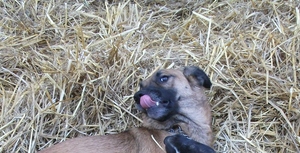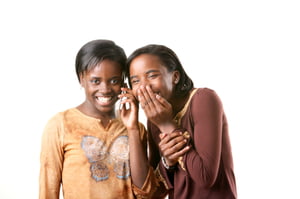When I was a kid, we had a Manchester Terrier named Susie. My mom was constantly telling my siblings and me not to tease her, but like most kids, we didn’t listen. One day I was teasing Susie by grabbing her back feet and she wasn’t amused with my game. Before I knew what happened, she bit me on the face. Mom, didn’t punish Susie and while attending to my injury, explained why it was my fault. There are reasons why dogs bite and most of them could be prevented if people would only take the time to learn how to read a dog’s body language, listen to their growls, and teach their kids how to act around all canines. It’s not the dog’s fault and he does have a reason for his actions.
Dogs don’t bite out of the blue and there’s always warning signs, but most people miss them. A family pet may take being poked, crawled on or having his tail and ears pulled and we think the dog doesn’t have a problem with it, but sometimes they do. We can rub dogs the wrong way and they put up with a lot more from us then we realize. A friendly dog that suddenly bites gave warning signs weeks or possibly years before the bite occurred. Too many pet owners just aren’t that good at seeing or understanding what their dog is telling them.
A dog can bite if he’s feeling threatened and thinks he needs to protect himself. If he’s scared, fearful, anxious, has pain, hasn’t been properly socialized, has little or no training, has a lack of exercise, hasn’t learned bite inhibition, or doesn’t feel well. Even dogs can have bad days and feel grumpy. Loud noises and screaming can be stressful for dogs and sudden movements, like running, can activate their prey drive. A dog that feels he needs to protect his food, toys, owner, property or personal space can bite. Canines are just like us when confronted with an option of fight or flight and biting is their only course of action if they feel a need to fight.
It’s important for us to take a step back to understand how our actions are interpreted by dogs. We like to get down in the dog’s face and look him right in the eye, but this is rude and can be seen as a challenge. Few dogs actually like to be hugged, especially by someone they don’t know. They tolerate hugs from someone they have a bond with, but it’s not one of their favorite interactions with us.
Another mistake we make is to correct a growling dog instead of watching everything that’s going on to understand why he’s growling. By not addressing how a child or adult is acting around the dog and punishing him for growling, he learns to hold in his frustration or objection until it becomes impossible for him to suppress his feelings and he finally loses it and bites. A good example is when a child is allowed to constantly bother a dog by pulling on his ears or getting in his personal space. The dog growls, gets into trouble, but the child isn’t taught how to properly interact with him and continues to irritate the dog. Canines are just like us and there is a limit to their patience. When you ignore the reason for his objections and he gets into trouble, he hides the warning signs he would normally put out.
Warning signs dogs give before they bite include; yawning (which is one way they try to get rid of stress), lip licking around the mouth (licking his chops which indicates stress), giving you a pleading or helpless look, showing his teeth, curling his upper lip, getting up and moving away from the person or turning his head away from someone, looking down toward the ground, showing the whites of his eyes, scratching his ears, biting his feet or licking himself. Getting up and shaking himself after someone has touched him, his tail is tucked between his legs, he looks at you out of the corner of his eyes, his ears are laid back or the hair on his back is raised are all indicators he’s not happy. If he’s growling, listen to what he’s telling you with his body and his voice.
The only way canines can communicate with us is with their body and growls. A dog that snaps isn’t trying to bite you. He’s telling you to back off and leave him alone. It’s a warning sign, just like his growl. If his intention is to bite, he won’t miss. Even a well socialized dog that’s grown up with kids can bite under the right circumstances and no dog should ever be left unsupervised around small children.
Six Important Things to Consider Before Adopting a Pet
Body Language of Dogs: Understanding Raised Hackles
What a Dog’s Body Language Tells You About Dog Behavior



